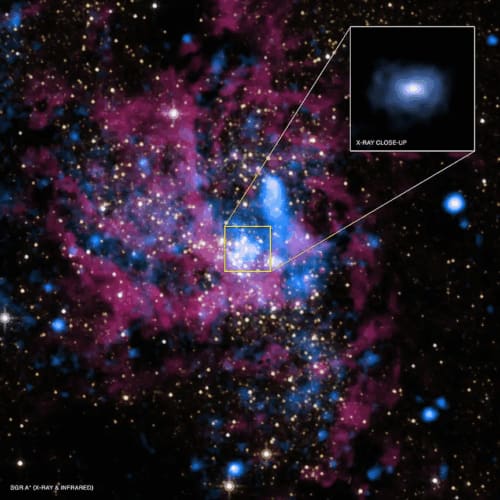Unveiling the Galactic Enigma: Dark Main Sequence Stars
 The Tech Times
The Tech Times
In a revelation that could redefine our understanding of the cosmos, astronomers have uncovered a tantalizing new concept: the existence of "dark main sequence" stars, potentially lurking at the center of our galaxy. These hypothetical celestial bodies might owe their longevity to the mysterious forces of dark matter, a substance that remains one of astrophysics' most intriguing puzzles.
The Mystery of Immortality
The idea, as proposed by researchers, involves dark matter particles and antiparticles colliding within stars, leading to an extraordinary outcome—immortality. In the classical sense, stars are born, they age, and eventually they die, often in spectacular supernova explosions. However, the presence of dark matter might alter this lifecycle dramatically. In theory, when dark matter particles and their antiparticles meet, they annihilate each other, releasing energy that could potentially fuel a star indefinitely, making it 'immortal'.
This not only challenges our current understanding of stellar evolution but also hints at a deeper relationship between conventional matter and dark matter. While regular main sequence stars rely on nuclear fusion of hydrogen into helium to sustain their lives, dark main sequence stars might draw energy from another, more elusive source.
Historical Context: A Century of Dark Matter Mysteries
To appreciate the significance of this theory, one must delve into the history of dark matter. The concept was first proposed in the early 20th century by Swiss astronomer Fritz Zwicky, who observed that galaxies were spinning too fast for the visible matter alone to hold them together. This led to the hypothesis of an unseen mass—dark matter—providing the necessary gravitational pull.
Since then, dark matter has become a cornerstone of modern astrophysics, yet it has remained frustratingly elusive. Despite being five times more prevalent than regular matter, it doesn't interact with light, making it invisible and detectable only through its gravitational effects. This intangibility has spurred decades of research, with scientists employing various methods, from deep space observations to underground detectors, attempting to capture or at least understand its essence.
The Galactic Center: A Hotbed of Cosmic Activity
The galactic center is an area of intense interest for astronomers. It's a chaotic region dominated by the supermassive black hole Sagittarius A*, surrounded by dense clusters of stars and clouds of gas and dust. This environment could potentially harbor the conditions necessary for dark matter interactions to occur on a significant scale.
Moreover, the galactic center's unique conditions could provide a fertile ground for dark main sequence stars to form. These stars, if they exist, would not only require the presence of dark matter but also an environment where particle-antiparticle annihilation can sustain them.
Implications for the Future of Astrophysics
The prospect of dark main sequence stars opens up a new frontier in astrophysical research. Confirming their existence would not only support the reality of dark matter but also provide a new tool for studying its properties. Such stars could serve as natural laboratories, offering insights into the interactions between dark matter and regular matter.
Furthermore, this theory invites a reevaluation of the mass and energy dynamics within galaxies, potentially influencing everything from galaxy formation theories to the fate of the universe itself.
Conclusion: A New Cosmic Perspective
While the theory of dark main sequence stars is still in its infancy, it highlights the ever-evolving nature of astrophysical research. As scientists continue to unravel the mysteries of the universe, these hypothetical stars stand as a testament to the endless possibilities that await discovery. The interplay between dark matter and stellar evolution may yet reveal secrets that could redefine our understanding of the cosmos.
As we peer deeper into the universe, the potential discovery of dark main sequence stars serves as a reminder of how much we have yet to learn about the celestial dance that governs the heavens.
Source: There could be “dark main sequence” stars at the galactic center
Subscribe to my newsletter
Read articles from The Tech Times directly inside your inbox. Subscribe to the newsletter, and don't miss out.
Written by
